Scythians did terrible things. Two-thousand five-hundred years ago, these warrior nomads, who lived in the grasslands of what is now southern Ukraine, enjoyed a truly ferocious reputation. According to the Greek historian Herodotus, the Scythians drank the blood of their fallen enemies, took their heads back to their king and made trinkets out of their scalps. Sometimes, they draped whole human skins over their horses and used smaller pieces of human leather to make the quivers that held the deadly arrows for which they were famous.
For a long time, readers have questioned the accuracy of this story, as they did with many of the fantastical tales told by Herodotus, collected from various parts of the ancient world. (Herodotus was even called the “father of lies” in his time.) However, new evidence has emerged that supports his version of events. In 2023, a group of scientists from the University of Copenhagen, headed by Luise Ørsted Brandt, analyzed the composition of leather objects, including several quivers, found in Scythian tombs in Ukraine. By utilizing a type of mass spectrometry that allowed them to examine the “molecular signature” of biological samples, the team discovered that while most of the Scythian leather originated from sheep, goats, cows, and horses, two of the quivers contained fragments of human skin. Brandt recently shared with me, “Some question the historical accuracy of Herodotus’s texts, and some of his writings may seem more like mythology, but in this case we were able to prove that he was correct.”
Herodotus can claim a victory with this discovery. However, the advanced investigative methods used by the researchers in Copenhagen also suggest something about the future of the study of history. Despite the changes in technology, the fundamental techniques of writing history have remained largely unchanged since ancient times. Like Herodotus, historians can still travel and interview people to gather their personal accounts of events, though this is now often referred to as journalism. Alternatively, historians can follow in the footsteps of those who came after Herodotus and compile written documents from the past in order to reconcile different perspectives and interpretations. This was the approach I was taught during my time in graduate school in the 2000s. We studied primary texts from the time period we were researching, as well as works by later historians, and then constructed an argument based on these sources within the larger conversation among historians.
What if there was an alternative approach? Instead of analyzing written records and criticizing arguments, what if history could be written directly from physical artifacts, using forensic techniques to reconstruct events? This would be a history based on objects rather than words. Archaeology, art history, and other disciplines have long promised this type of history through their close study of material culture. However, there has traditionally been a divide between what these fields could offer and the perceived primary task of historians. Historians focused on individuals and specific moments through archival documents, while archaeologists examined broader trends through architecture, burials, and other artifacts. There were some areas of overlap, such as the study of coins and seals. However, for the most part, these two approaches to studying the past were seen as separate. Recently, however, this division has become less clear.
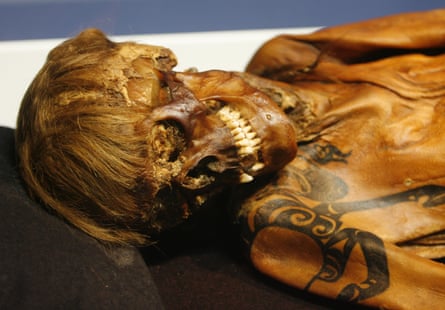
View the image in full screen mode.
In recent years, scientists have made significant advances in extracting information from material remnants. In certain areas, such as researching ancient climates, traditional techniques have been enhanced for more accurate and comprehensive results. Meanwhile, previously costly and unreliable procedures like whole-genome DNA sequencing have now become widely accessible and dependable for studying ancient samples. Additionally, new techniques for dating, imaging, and chemical analysis have enabled a deeper understanding of antiquity, allowing even mundane objects like teeth, shoes, and garbage to provide valuable insights about the past.
Today, historians are not solely examining manuscripts, but also conducting experiments on the pages themselves to trace the origins of the animals whose skins were used to create the parchment. Small amounts of protein found in archaeological excavations can now be utilized to accurately identify remnants of decomposed organic material – for example, beaver pelts in a Viking burial site – and trace them back to their original source. This field of research is known as proteomics. Additionally, other forensic methods have shed light on previously unknown aspects of history. By analyzing stable isotopes found in human bones and animal teeth, scientists have been able to track the movements of individuals from ancient times, such as a girl’s journey from Germany to Denmark during the Bronze Age, the trade of baboons from the Horn of Africa to ancient Egypt, and the migration patterns of a woolly mammoth in the American midwest 13,000 years ago. Furthermore, the sequencing of ancient DNA extracted from medieval ivory chess pieces has revealed their African origins. Even chicken bones have played a role in mapping the expansion of Polynesian populations across the Pacific.
Not everyone has rejoiced at these advancements. Scholars in the field of humanism tend to view historical events through a human lens, attributing major changes in history to shifts in culture and society. On the other hand, scientists who study the natural world tend to focus on fluctuations in nature, often linking the downfall of empires and kingdoms to factors such as prolonged periods of drought or widespread disease outbreaks. Some historians, such as Merle Eisenberg and John Haldon who specialize in the Byzantine Empire, urge caution against jumping to conclusions about the relationship between society and the environment. They also caution against making exaggerated claims about the influence of climate and illness on civilization.
Some historians are excited about the potential of the new field of science. According to Michael McCormick, a medieval studies professor at Harvard and holder of the University’s chair in the Science of the Human Past, these advancements have sparked a “scientific revolution” that is still in its early stages. Speaking from his home in Cambridge, Massachusetts, McCormick expressed his enthusiasm for how history is currently comparable to astronomy during Galileo’s discovery of the telescope.
In the 1970s, while studying at the Catholic University of Louvain in Belgium, McCormick acquired the necessary skills for a medieval historian, including Greek and Latin philology, linguistic history, vulgar Latin, late Greek, classical Greek, and palaeography. However, he now believes that this type of training should also incorporate a focus on material evidence. He explains, “By having physical artifacts from the past, we can utilize the tools of the scientific revolution to further our understanding.” For example, examining leather can reveal information about the animal it came from, and analyzing lumber can provide insight into the location of its origin. With the use of molecular data, we can access a wealth of knowledge about human history, including our migration from Africa.
McCormick’s passion has been widely shared. There has been a significant increase in funding and grants towards utilizing scientific techniques in studying history. Numerous institutions, programs, and centers of excellence focusing on this subject have emerged across the globe, bringing with them answers to questions that were previously unknown to historians.
T
The emerging field of historical science is especially enlightening when examining time periods with limited written records. Our knowledge of the early medieval era, commonly referred to as the dark ages, relies heavily on monastic chronicles and accounts of saints. While these sources provide a wealth of information on religious practices, they offer less insight into the formation of kingdoms and development of trade.
In recent years, advancements in science have allowed for a better understanding of historical events. Following the decline of the western Roman empire, the European economy suffered greatly. While there was no means of tracking the extent or timing of this crash through stock tickers or economic indices, historians have been able to gain insight by examining evidence preserved in ice. Ice cores extracted from glaciers in Switzerland and Greenland provide a chronological record of the atmospheric composition, with each year represented in layers. By analyzing levels of lead in these cores, researchers have found a correlation to the amount of silver being mined at the time. When atmospheric scientists measured the concentration of ancient lead pollution in sections of the ice core dating back to the first millennium AD, they discovered that silver production had drastically dropped in the third century – much earlier than anticipated and long before the decline of Roman power – and did not recover for 400 years until the Merovingians re-opened major silver mines in France.
Archaeological findings have revealed that trade networks started to resurface across the continent after a low point in the sixth and seventh centuries. By utilizing DNA testing, a laboratory was able to confirm that animal skulls discovered in a medieval settlement beneath present-day Kyiv originated from walruses hunted in the waters between Canada and Greenland. These walruses were then transported 2,500 miles to be used in the creation of jewelry and chess pieces. Further analysis of beads found in Viking trading centers indicated that the glass used in the beads was sourced from Roman mosaics, which were located hundreds of miles away from their final destination in Scandinavia.
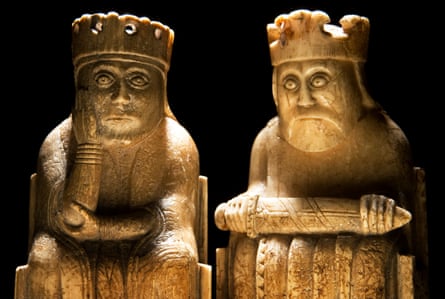
This study uncovers connections between regions in the north and south, as well as the east and west, piece by piece and tooth by tooth. However, this is not a new concept. Archaeologists have been skilled at aligning physical evidence with historical stories for centuries. Despite this, there has always been a disconnect between the two sources of information. Excavated materials provide extensive information on the daily lives of common people, but lack precise timelines. In contrast, the written sources used by historians are more definitive on dates, but lack details about everyday life.
A novel approach to studying past climates is allowing researchers to bridge this knowledge gap. Today, paleoclimatologists have access to data from numerous ancient trees and ice samples, enabling them to determine the conditions in a specific location during any given year. This has opened up the possibility of examining the climate changes that may have influenced significant historical events. For example, what were the weather conditions like during the Huns’ invasion of the Roman empire? (Unusually arid, particularly in the summer – ideal for motivating pastoralists to search for better grazing lands.) Or what was the climate like in Mongolia when Genghis Khan was amassing his army? (Warm and moist, perfect for sustaining a large army and its many horses.)
Pandemics, alongside climate, are significant factors in shaping historical events. Recent advancements in identifying the origins and spread of past diseases have been impressive. This can be attributed to the study of ancient microbial and viral genes, which has allowed for precise identification of ancient diseases. The process of genome sequencing has become quicker and less expensive, while also improving the ability to extract DNA from skeletal remains. The inner ear bones have been found to contain a wealth of ancient genes, aiding in this process. With over 10,000 ancient genomes already sequenced and more on the way, it is now possible to track human migration patterns throughout history. Anthropologists can trace the spread of early humans from Africa, while prehistorians can observe the emergence of horse-riding nomads during the late Stone and early Bronze Ages.
Illnesses traveled alongside humans, but the specific paths of transmission between continents have remained uncertain. However, through the study of human genes, paleogeneticists have successfully sequenced the genetic makeup of diseases that affected individuals at the time of their passing. This allows them not only to identify ancient ailments, but also to track their spread and evolution over the years.
Through the study of palaeogenetics, researchers have made significant contributions towards understanding one of the most significant disasters and enigmas in human history.
I
In the year 536, the world began to experience unusual events. The sun appeared less bright in the sky, resembling the moon even at midday in the summer. Crops suffered, with wheat rotting and grapes spoiling. The following winters were extremely cold. Five years later, a more disastrous event occurred. In 541, news spread of a deadly disease that had reached the Mediterranean shores. It was believed to have originated in Egypt, possibly from Ethiopia or India. Travelers in Palestine reported seeing deserted villages where the illness had claimed the lives of those who did not escape.
In 542, the disease had spread to Constantinople, the largest city and capital of the eastern Roman empire, also known as the Byzantine empire. It was reported that at its peak, the plague was causing the death of around 10,000 individuals daily. All types of work came to a halt and there was widespread famine. Even the emperor, Justinian, who had created a legal code and constructed the impressive Hagia Sophia church, became ill.
It has been difficult for historians to accurately understand and explain the events surrounding the Justinianic plague. The available chronicles from that time period offer limited perspectives, such as reports from the capital and a traveler’s account from Palestine. Due to a lack of knowledge about bacteria and viruses, people at the time were unable to identify the biological source of the plague. The sudden drop in temperature before the outbreak also remains a mystery – was it a local occurrence or a global phenomenon? And what could have caused the unusual dimming of the sun?
The consequences of this unusual dual catastrophe are also a topic of debate. In the recent past, many specialists did not view them as significant. However, currently, some historians label the year 536 as the “most catastrophic year in human history”, and the following decade of hardship as a major turning point in global history. According to Mischa Meier, a history professor at Tübingen University in Germany and an expert in Byzantine history, it was a significant “break between eras” that played a crucial role in the shift from late antiquity to the early Middle Ages.
The decline of the Byzantine empire was not caused by the plague, but it did bring about significant changes. The empire became a more fearful society and placed greater emphasis on religious beliefs rather than the wisdom of the past. Instead of idolizing figures like Aphrodite and Cicero, the people turned their attention to the Virgin Mary. Religious processions replaced popular events such as chariot races. Emperors ruled not as powerful leaders, but as fervent preachers preaching about salvation in the face of an impending apocalypse. In a way, this marked the end of the ancient world, not through a war or siege, but with a mere sneeze.
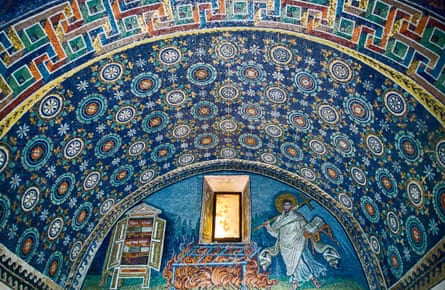
The topic of this dissertation delves into the transformative effects of the plague and the disaster it caused, which is a relatively recent idea that still sparks debate. The process of how the events of the 540s evolved from a minor historical blip to a significant turning point in history required extensive research across various disciplines and showcases the capabilities of modern technology in unraveling the mysteries of the past.
For a long time, it was believed by historians that Yersinia pestis, the bacterium responsible for the bubonic plague, was the cause of the Justinian plague. However, without any genetic evidence, this could not be confirmed. In 2014, palaeogeneticists were finally able to identify genetic markers of the bubonic plague from remains dating back to the sixth century. Surprisingly, these markers were found in southern Germany, far from the Mediterranean cities where the plague was thought to originate. Since then, similar evidence has been found in remains from France, Spain, and the UK. Further analysis of a medieval cemetery in rural Cambridgeshire showed that 40% of those buried there died from the bubonic plague. These discoveries suggest that the Justinianic plague was more widespread than previously thought, reaching areas beyond the borders of the Roman Empire such as Bavaria and Cambridge. The minimal genetic variations among the sixth-century samples indicate that the plague spread rapidly across Europe.
Determining the cause of the remaining 50% of the 536 disaster – the peculiar weather that began in that year – necessitated the use of a different set of scientific methods. The first clue came from examining tree rings. By studying data collected from trees in the Austrian Alps and Altai mountains, Ulf Büntgen, a professor at Cambridge specializing in environmental systems analysis, and his colleagues were able to prove that 536 was indeed an extraordinary year, with “the coldest summer in the northern hemisphere in the last 2,000 years.” The following decade was also the coldest of the past 2,000 years.
However, the reason behind this abrupt and surprising decrease in temperature remains a mystery. To uncover the cause, researchers turned to Arctic glaciers for answers. Upon analyzing ice cores dating back to the sixth century, they discovered an abnormally high concentration of sulphates during the late antique little ice age. Before the industrial era, sulphur in the atmosphere primarily came from volcanic activity. Large volcanic eruptions release large amounts of gas into the upper atmosphere, which can lead to global cooling by reflecting solar energy back into space. The findings from the ice cores suggested that a succession of massive volcanic eruptions must have occurred in the mid-sixth century, causing a global temperature drop. However, there was a discrepancy in the dates. The ice cores showed that the first eruption took place in 543, but how could global cooling begin seven years before the eruption that triggered it? The answer to this puzzle was found in an unlikely source.
In 2012, a Japanese astrophysicist, Fusa Miyake, researched the changes in the behavior of the sun throughout history. She measured the levels of carbon-14, also known as radiocarbon, in the rings of ancient cedar trees on Yakushima Island. Miyake discovered that there were spikes in radiocarbon levels during certain years, most likely due to solar storms that affected the Earth. The presence of this chemical signature in organic materials from these years, now known as Miyake events, allows for the dating of objects found at archaeological sites. This method has been used to determine that the Vikings arrived in Newfoundland in 1021, which is 20 years later than previously believed.
Scientists used radiocarbon spikes found in ice core samples from Greenland and Antarctica to uncover the reason behind a seven-year gap in historical data. It was discovered that errors had been made in previous ice core data, resulting in an inaccurate timeline. The new data from Miyake corrected these mistakes, leading to the elimination of the seven-year gap and confirming the eruption in 536 that caused the unusual cloud formation. Two additional eruptions in 540 and 547 also contributed to the intense cooling that occurred during the entire decade.
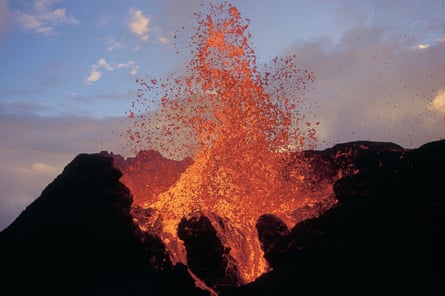
Display the image in full-screen mode.
Using these updated timelines, scientists were able to combine genetic information, tree ring data, and ice core samples to create a cohesive story of events following the year 536. The resulting picture was a terrifying one: years of sunless summers and freezing winters, followed by a devastating outbreak of what may have been the most deadly disease in human history. Archaeological evidence also supports this grim portrayal of a world in collapse. Excavations throughout Scandinavia have revealed a time of extreme poverty and violence during the mid-sixth century. As Danish archaeologist Frands Herschend puts it, this was a moment when the entire region “descended into chaos”. It’s no wonder that the Byzantines believed the end of the world was near.
However, this was not the case. In 541, the Byzantine empire did not fall. Despite facing the challenges of a deadly epidemic and severe volcanic weather, it managed to endure without collapsing. This has caused some historians to question whether the event truly marked the “end of the ancient world”. Lee Mordechai and Merle Eisenberg, both historians at Hebrew University and Oklahoma State University, believe that the Justinianic plague was a relatively insignificant pandemic. They argue that there is limited proof that the plague directly caused the downfall of empires or states.
Eisenberg, speaking to me on the phone from Oklahoma, compared the sixth-century crisis to a “murder mystery with no body”. Although there is a perpetrator and a method, the victim does not actually die. After the plague, Byzantium remained relatively stable for another 80 years until the Arab conquests, which occurred three generations later, devastated the empire and took away much of its territory. Eisenberg poses the question, “How can we plausibly connect an event in the 540s to one in the 630s?” This is akin to suggesting that the 2008 recession was caused by the 1918 flu.
T
The conflict between scientific findings and traditional storytelling is a common theme in the modern era of interdisciplinary, laboratory-driven history. In the field of history, the causes of events are rarely as straightforward as a scientific experiment. Events occur within a complex network of human institutions and beliefs, and their significance is determined by how people interpret them. For many historians, including myself, this means that comprehending a historical shift involves examining the intricacies of culture, religion, economics, and political structures.
However, scientists often prioritize climate over culture and pandemics over politics when analyzing events. Drought has been solely attributed to the downfall of the classical Maya, the Hittites and Akkadians, Angkor in Cambodia, Tiwanaku in Peru, and the ancestral Puebloans of the American south-east. Similarly, volcanic eruptions have been cited as the cause of collapse for multiple other civilizations, including the Byzantine empire.
Some people argue that throughout history, there are not many instances where societies have suddenly collapsed due to environmental strain, based on the evidence we have. Nicola Di Cosmo, a specialist in China and central Asia at Princeton’s Institute for Advanced Study, notes that there is no one definitive way for societies to react to climate disasters. The nomadic empires he focuses on were especially susceptible to shifts in weather patterns, as they relied on herds of animals that could easily be devastated by prolonged droughts or harsh winters.
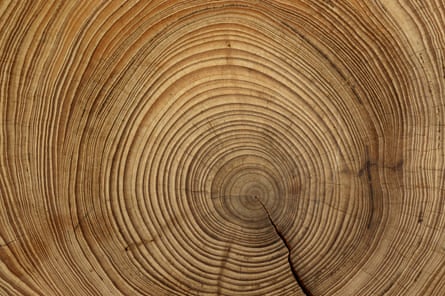
However, despite being in a precarious environmental situation, states were able to show resilience in the face of disaster. Following a period of harsh winters in the late 620s, the Eastern Turkic empire experienced military losses and was eventually conquered by neighboring Tang China. One hundred and fifty years later, the Uyghur empire, which occupied a similar region as the Eastern Turks, faced a severe and lengthy drought. However, instead of collapsing, it flourished by forming a military alliance and maintaining beneficial trade connections with the Tang dynasty.
In each of these instances, the factors that determined whether a society survived or declined were influenced by political and economic choices, rather than solely by climate data. However, shifts in foreign relations and global trade cannot be seen through analyzing tree rings. Similarly, studying ancient genetics presents a similar challenge. While it produces vast amounts of data, it lacks the depth of context that can only be provided by utilizing more traditional humanistic approaches.
N
Recent research in the field of science has primarily centered on wars and disasters. According to Michael McCormick, the significant contribution of “molecular history” is its capacity to provide insight into the lives of marginalized individuals. Women, people with disabilities, and those who were enslaved are often mentioned in written records, but their perspectives are limited and filtered through the viewpoints of others. On the other hand, cemeteries offer a more diverse representation of these groups, with a larger number of individuals being present.
In 2014, researchers analyzed the dental plaque on the teeth of a deceased nun whose body was found in a medieval cemetery in central Germany. The analysis showed small traces of lapis lazuli, a valuable material comparable to gold at that time. Lapis lazuli was primarily used as a pigment, specifically for creating ultramarine, the most vibrant and desirable blue hue during the medieval period.
How did an unknown nun, who passed away circa 1100, end up with fragments of a valuable and uncommon substance in her teeth? According to archaeologists, it is likely that these fragments were acquired while she was creating illuminated manuscripts, either through handling the pigment or by using her tongue to shape the paintbrush while working on the pages.
There is limited information about the specific contributions of women in the making of illuminated manuscripts. Despite being considered some of the most significant works of art from the medieval period, very few manuscripts were signed by their creators. Out of the manuscripts that have been attributed to individuals during this time, only 1% can be confidently credited to women. However, as exemplified by this particular nun, the lack of written records should not be interpreted as proof of women’s lack of involvement.
The identity of the German nun mentioned in this text may never be known. Without written records, artifacts and remains can only provide limited information. However, advancements in isotope analysis and DNA technology have expanded these limitations. Scientists can now trace the movements of individuals within their lifetimes, revealing personal stories from ancient times. For example, a young African boy who grew up by the Red Sea and died at a young age in Roman Serbia, a girl from southern Germany who was sent to Denmark, possibly for marriage or death, and a Sarmatian child who left the Caucasus mountains during the time of Emperor Marcus Aurelius and died in Britain, buried in an unmarked grave on a farm in Cambridgeshire.
Was he a soldier or a slave when he arrived there? Did he adopt Roman customs after living in the empire for about 10 years, or did he continue to follow the traditions of his nomadic ancestors? These are questions that we can only speculate about. However, the fact that we can even pose these inquiries demonstrates the profound changes that have occurred in the study of history in recent years. History has now entered its “pointillist” phase, where the major events are depicted through a multitude of individual movements. In this particular case, we witness history unfolding on two levels. In the background, we have the grand narrative of wars, trade routes, and conflicts spanning a large portion of a continent. In the foreground, we have a young man who has passed away in a foreign land, whose life and destiny can only be imagined.
Source: theguardian.com



